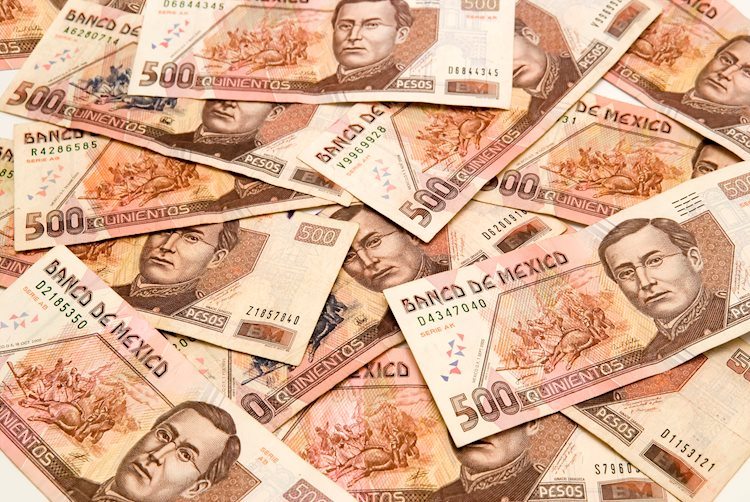The Mexican Peso (MXN) has been on the rise against key pairs, driven by expectations of lower interest rates in the US and Europe. The USD has been hit by a debate over a possible 50 or 25 basis points cut, while the Euro faces lower economic growth forecasts. USD/MXN reached a downside target after breaking out of a rising channel.
The expectation of faster interest rate cuts in Europe and the US, as growth slows and labor markets weaken, has been weighing on key counterparts of the Mexican Peso. Mexico’s relatively high interest rates of 10.75% continue to attract foreign capital inflows, supporting the Peso. The currency has appreciated by an average of 2.3% against major currencies so far this week.
The Mexican Peso is gaining against the US Dollar following speculation of a potential 0.50% interest rate cut by the Federal Reserve at its September meeting. This news was sparked by reports from respected sources like The Wall Street Journal and comments from former Federal Reserve Bank of New York President William Dudley. The possibility of lower interest rates has caused a drop in US Treasury yields and weakened the USD.
On the other hand, the Peso is rising against the Euro after the European Central Bank decided to cut interest rates at its September meeting. The ECB also revised its economic growth forecasts downward, which led to speculation of further rate cuts in the future. Additionally, the Pound Sterling is trading lower following disappointing GDP growth data from the UK.
Despite controversial judicial reforms in Mexico, the Peso remains strong, with investors pricing in the risks associated with the reforms. The perceived lower probability of a Donald Trump victory in the US presidential election has also alleviated some political risk for Mexico. The country continues to benefit from a nearshoring boom as global manufacturing companies relocate production to Mexico.
In a technical analysis, USD/MXN has reached downside targets after breaking out of a channel, with the pair now oversold. Traders are advised not to add to short positions as a pullback may be imminent. While the short-term trend is bearish, the medium and long-term charts indicate a bullish trend, suggesting the potential for a recovery and continuation of the broader uptrend.
In economic indicators, the Producer Price Index (PPI) released by the Bureau of Labor Statistics measures changes in commodity prices by producers in the US. A high reading is seen as positive for the USD, while a low reading is seen as negative. This indicator is closely monitored as a gauge of commodity inflation.











